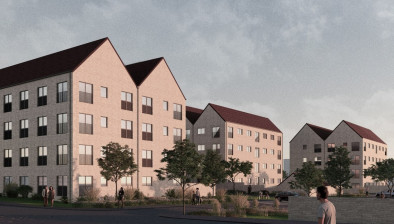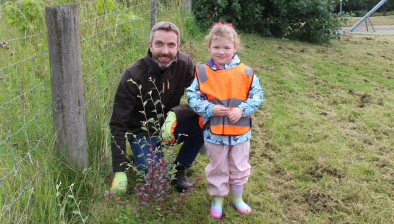Red Road flats were ‘too tough’ to be demolished, report finds
The demolition of the last remaining Red Road flats in Glasgow that left two tower blocks partially standing had failed because they were built with steel and were “too tough” to be demolished, a report has found.
An independent review of the demolition last October found that contractor Safedem used “good practice” during the process but “underestimated the robustness” of the buildings.
The top half of two of the six iconic towers remained standing at a slight angle after the bottom halves were destroyed.
Following the failed demolition, the towers were brought down using high-reach machinery.
The delay meant that many of the 2,500 residents evacuated for the demolition returned home around an hour later than previously scheduled.
Glasgow Housing Association (GHA), which ordered the demolition as part of plans to regenerate the area, apologised at the time saying the process “did not go completely to plan”.
The technical report into the incident by civil and structural engineering firm Scott Bennett Associations, which was commissioned by GHA, found that the structures were built with steel frames, meaning they were less likely to collapse.
It said the Safedem employed an “extremely experienced explosives engineer” who was a “recognised expert” in the field and carried out demolitions around the world and added that the contractor was right to “err on the safe side” and faced “exceptional difficulties” in predicting how the “unique” buildings would react to the demolition.
It meant that the actual size of the steel columns which formed the spine of the towers was unclear.
The report, released under Freedom of Information legislation, stated: “The partial collapse of both 123 Petershill Drive and 10 Red Road Court were due to the variances in their construction and the exceptional difficulties in predicting the behaviour of these unique buildings.
“In this instance, Safedem had carried out detailed surveys and noted a number of discrepancies between the surveyed buildings and the design drawings and therefore appear to have followed good practice.
“Bearing in mind these discrepancies, it would have been reasonable for their designers to take a cautious view of the structures and err on the safe side, regarding pre-weakening.”
The report noted that the use of steel frames in residential structures was “relatively uncommon” in the UK and that such buildings “do not crush under impact from the debris above and tend to be more robust.”
David Fletcher, GHA’s regeneration director, said the association’s plans to clear the area by late 2017 were “on track”.
He explained: “Once cleared, the area will be turned, short-term, into a safe and attractive green space for the community while plans for housing and amenities are brought forward in phases.
“We’ve consulted with local residents at community events and their views are helping shape the future regeneration plans.”









